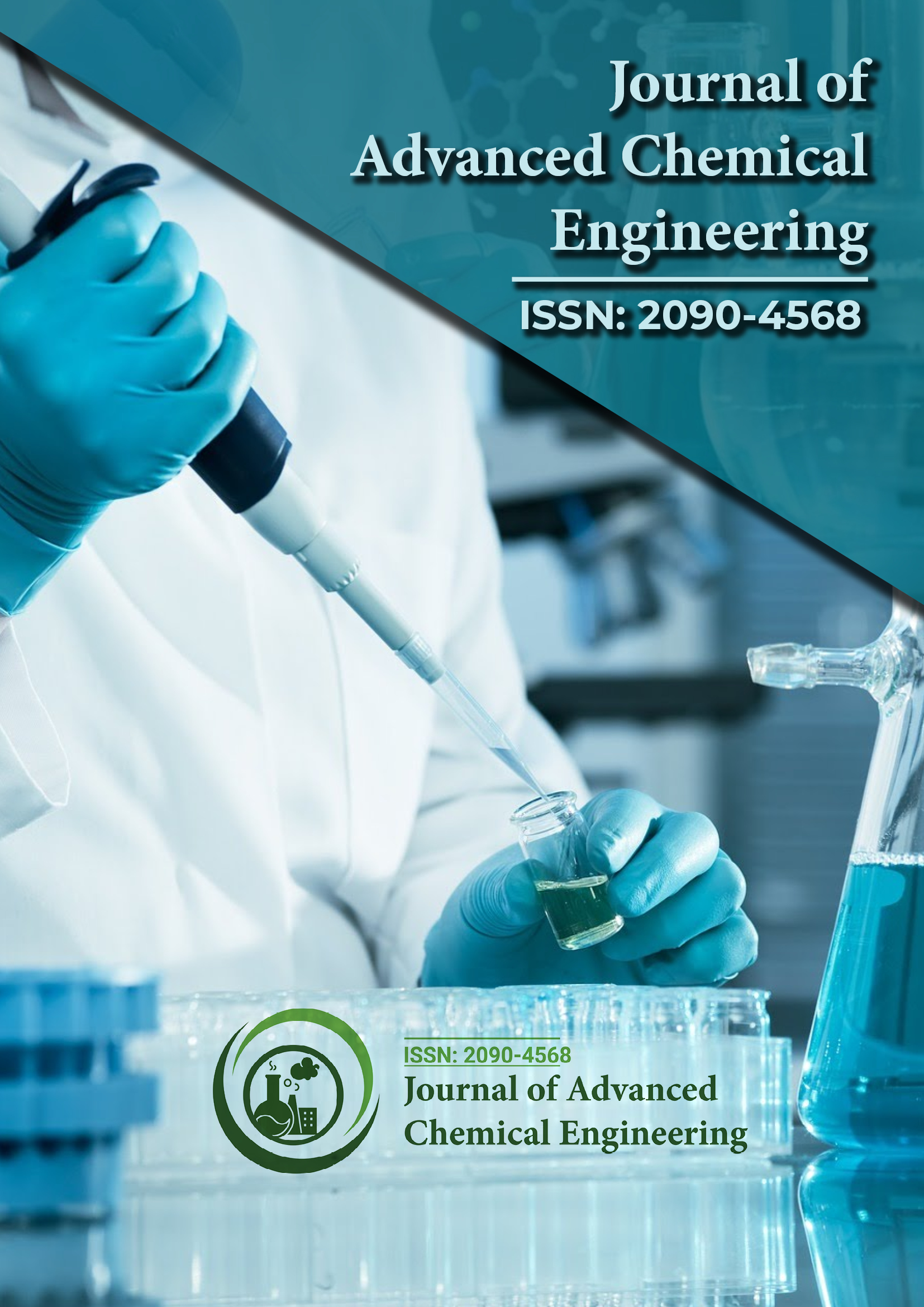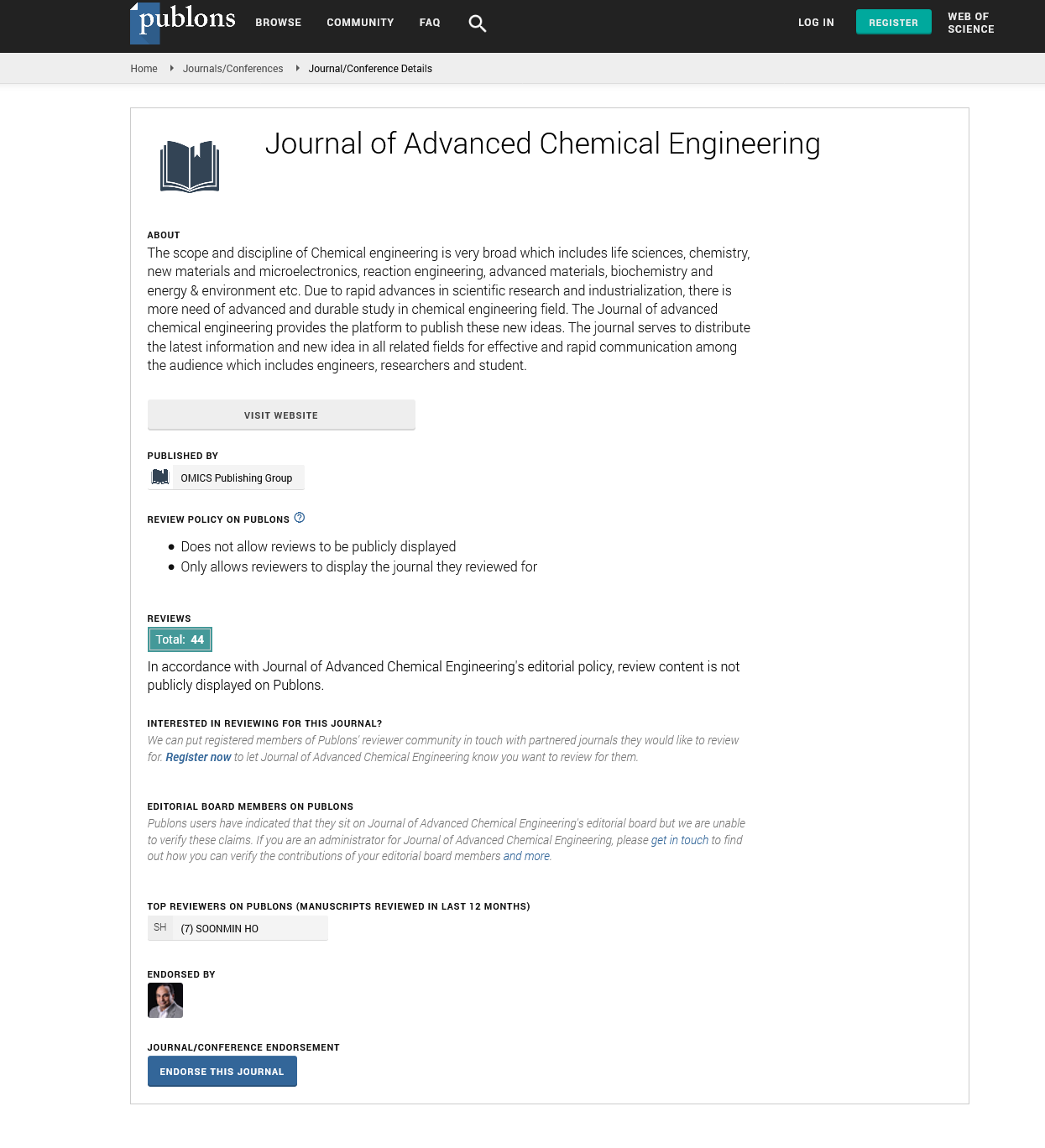Indexed In
- Open J Gate
- Genamics JournalSeek
- Smithers Rapra
- RefSeek
- Directory of Research Journal Indexing (DRJI)
- Hamdard University
- EBSCO A-Z
- OCLC- WorldCat
- Scholarsteer
- Publons
- Geneva Foundation for Medical Education and Research
- Google Scholar
Useful Links
Share This Page
Journal Flyer

Open Access Journals
- Agri and Aquaculture
- Biochemistry
- Bioinformatics & Systems Biology
- Business & Management
- Chemistry
- Clinical Sciences
- Engineering
- Food & Nutrition
- General Science
- Genetics & Molecular Biology
- Immunology & Microbiology
- Medical Sciences
- Neuroscience & Psychology
- Nursing & Health Care
- Pharmaceutical Sciences
Short Communication - (2022) Volume 12, Issue 5
Steel Production Chronicles and Manufacturing Methods
Gwen Joe*Received: 04-May-2022, Manuscript No. ACE-22-16835; Editor assigned: 09-May-2022, Pre QC No. ACE-22-16835 (PQ); Reviewed: 23-May-2022, QC No. ACE-22-16835; Revised: 30-May-2022, Manuscript No. ACE-22-16835 (R); Published: 08-Jun-2022, DOI: 10.35248/2090-4568.22.12.227
Description
Steel manufacturing is a critical process that has a significant impact on our global economy. Since the mid-1800s, steel has become one of the most relied upon materials globally, serving countless manufacturing and construction markets. According to the World Steel Association, global steel production supports or facilitates $2.9 trillion of the world`s economic activity, making it a crucial material supporting millions of jobs internationally. Steel might not seem like a commodity associated with advanced technology, but its manufacturing process has come a long way.
History of steel production
Steel is a discovery of the Iron Age, a period that started around 1200 BCE. Iron ore was first mined in Central Asia and Europe, and people used iron to make tools and weapons in a practice called ferrous metallurgy [1]. Iron products evolved during this time, beginning with blacksmiths producing wrought iron goods. These tradespeople learned to heat up iron ore, and using hammer and anvil, the blacksmiths remove impurities from the metal and produce a durable and malleable final iron product. Iron took a few other forms before eventually made. In China, Iron Age metallurgists heated iron in a large furnace, effectively dissolving the substance in a liquid and mixing it with wood fuel. The melted liquid is then poured into the mould, which solidifies and eventually takes the form of cookware and other items made from the mould known as cast iron, this process produced products that were more durable than wrought iron, but were brittle and difficult to mould and bend [2].
After cast iron, Central European blacksmiths began coating wrought iron products with charcoal to improve the strength of the iron while maintaining its flexibility. After that, iron went through a final iteration that most closely resembled today's steel. In India, ironworkers developed an iron smelting process that combined the perfect ratio of iron to carbon. Using crucibles, or clay containers, the ironworkers blend iron and charcoal pieces together in a high temperature furnace. While cooking, the iron is melted and absorbed carbon atoms from the charcoal. After cooling down, the crucibles contained know as steel-an iron carbon alloy. After the discovery of iron carbon alloys, various civilizations began to scale up their steel production practices, allowing them to make improved weapons, tools and structures. Since the Iron Age, people have tried to complete the steelmaking process. The continuous improvement in steel production has become a very important global commodity today.
Manufacture of steel
Today's steel production process began in 1856 with a process known as the Bessemer process and it is widely recognized as the first method of mass production of steel. According to historians, two different inventors in the UK and Pittsburgh developed a steelmaking process at the same time and used air blast to remove iron impurities [3]. With this discovery, other steelmakers began to complete the process and eventually discovered a way to use air blast to maintain carbon levels while completely removing contaminants. Eventually, this process evolved into a very low-cost method of mass-producing highquality steel that is still in use today. Today, steel is commonly made in two ways.
Blast furnace: In the blast furnace process also known as the Basic Oxygen Process (BOP); pig iron ore is combined with a small amount of scrap steel in the blast furnace [4]. Then pure oxygen is blown into the furnace and its temperature rises. At this temperature, not only does the scrap melt into a liquid, but iron impurities are oxidized and completely evaporated. In addition, the high temperature reduces the carbon content to the ideal ratio and produces molten steel.
Electric arc furnace: In an Electric Arc Furnace (EAF) process, a high current arc from an electrode melts a large amount of steel scrap into a liquid. Once the scrap steel has melted, engineers add other iron alloys until the metallic liquid reaches the desired ratio of steel to other alloys such as chromium and nickel that make up stainless steel. Then, to clean the steel, oxygen is blown into the furnace and lime and fluorite are added. These substances combine with impurities in the steel to form slag. The slag then floats on the surface of the molten steel, where it is removed, leave clean steel [5]. The EAF process is the most common steelmaking process today. Today's latest EAF steel mill furnaces produce 150 tons of steel in a single heat, which takes about 90 minutes.
Conclusion
Steel is a versatile, affordable and abundant material, making it an ideal material for a myriad of manufacturing capacities. Original Equipment Manufacturers (OEMs) and other manufacturers rely on the value of steel to create their own components and products . Companies around the world procure steels and metal alloys to create products and bring design to life. Custom metallization and design are important in the global economy as they enable companies to invent new and useful products and take the risk of innovative designs that help shape and improve our daily lives. Professional service
Metal manufacturing and design brings together a wide range of specialists, from designers, engineers and consultants to welders, metal workers and installers. All experts are responsible for ensuring that steel and metal materials are transformed into well-designed, high-quality components and final products that play an important role in our global market.
REFERENCES
- Kolesnikov A, Fediuk R, Amran M, Klyuev S, Klyuev A, Volokitina I, et al. Modeling of Non-Ferrous Metallurgy Waste Disposal with the Production of Iron Silicides and Zinc Distillation. Materials. 2022;15(7):25-42.
[CrossRef] [GoogleScholar] [PubMed]
- Lin W, Yu Z, Chen X, Liu R, Zhang H. Molecular characterization of natural biofilms from household taps with different materials: PVC, stainless steel, and cast iron in drinking water distribution system.
Appl Microbiol Biotechnol. 2013;97(18):8393-401.[CrossRef] [GoogleScholar] [PubMed]
- Liu Z, Liu D, Jin J, Feng L, Ni M, Zhao B, et al. Impact of gas impurities on the Hg0 oxidation on high iron and calcium coal ash for chemical looping combustion. Environ Sci Pollut Res. 2021;28(34):46130-46146.
[CrossRef] [GoogleScholar] [PubMed]
- Gao X, Zhou X, Zou H, Wang Q, Zhou Z, Chen R, et al. Exposure characterization and risk assessment of ultrafine particles from the blast furnace process in a steelmaking plant.
J Occup Health. 2021;63(1):e12257.[CrossRef] [GoogleScholar] [PubMed]
- Zhao S, Xu Y, Liu C, Wei F. Impact of Carbon Tax and Subsidy Policies on Original Equipment Manufacturers and Remanufacturing Companies from the Perspective of Carbon Emissions. Int J Environ Res Public Health. 2022;19(10):6252.
[CrossRef] [GoogleScholar] [PubMed]
Citation: Joe G (2022) Steel Production Chronicles and Manufacturing Methods. J Adv Chem. 12:227.
Copyright: © 2022 Joe G. This is an open-access article distributed under the terms of the Creative Commons Attribution License, which permits unrestricted use, distribution, and reproduction in any medium, provided the original author and source are credited.

